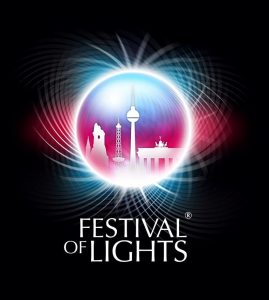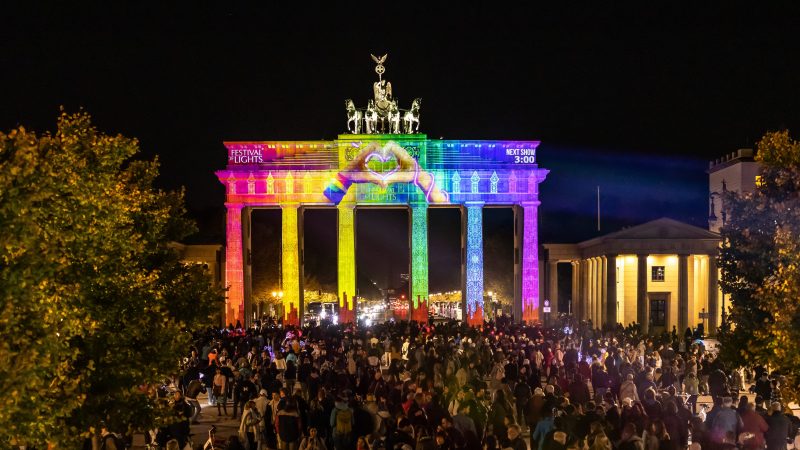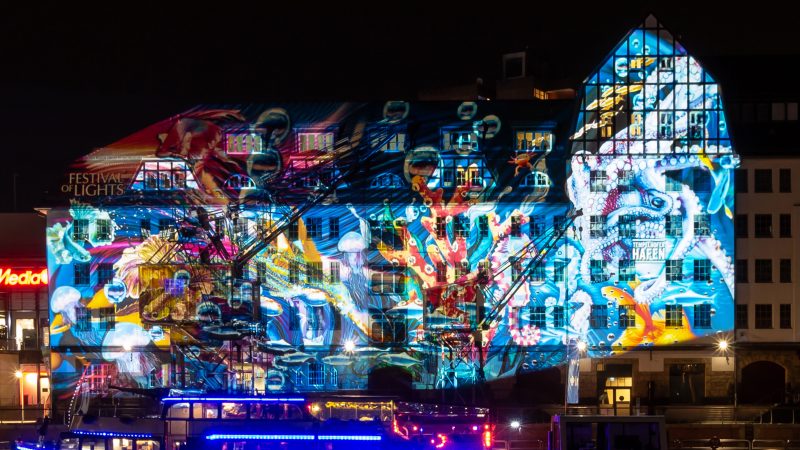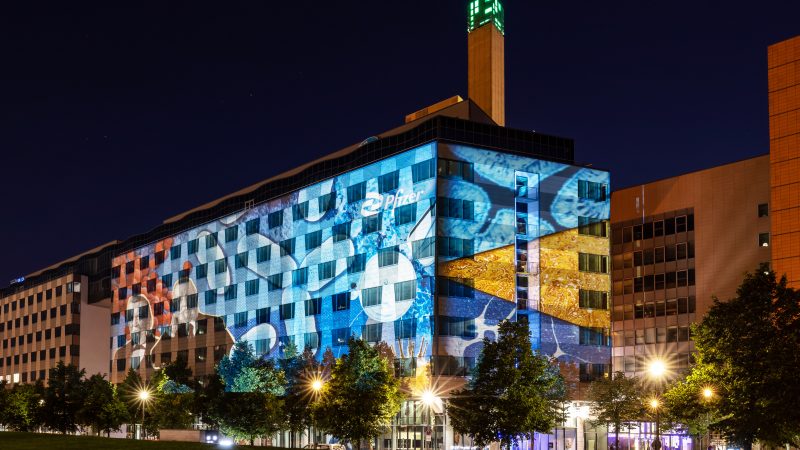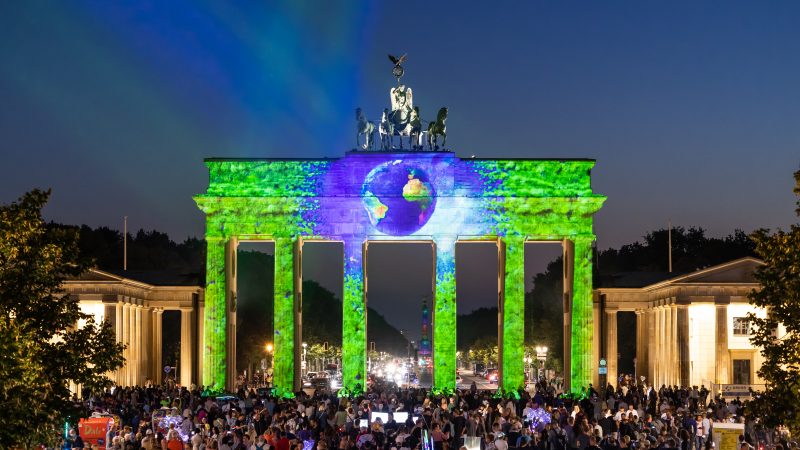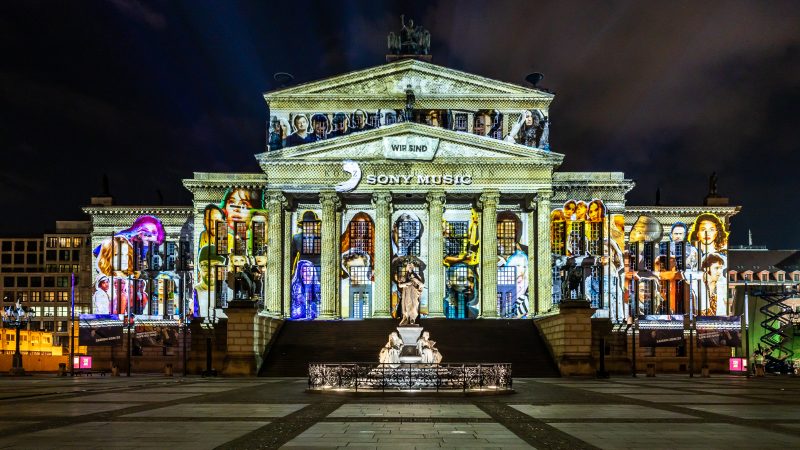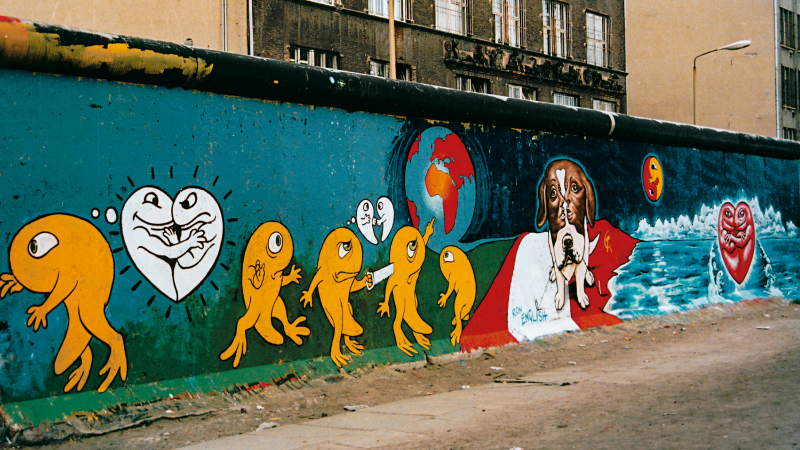Photo Competition by Excire
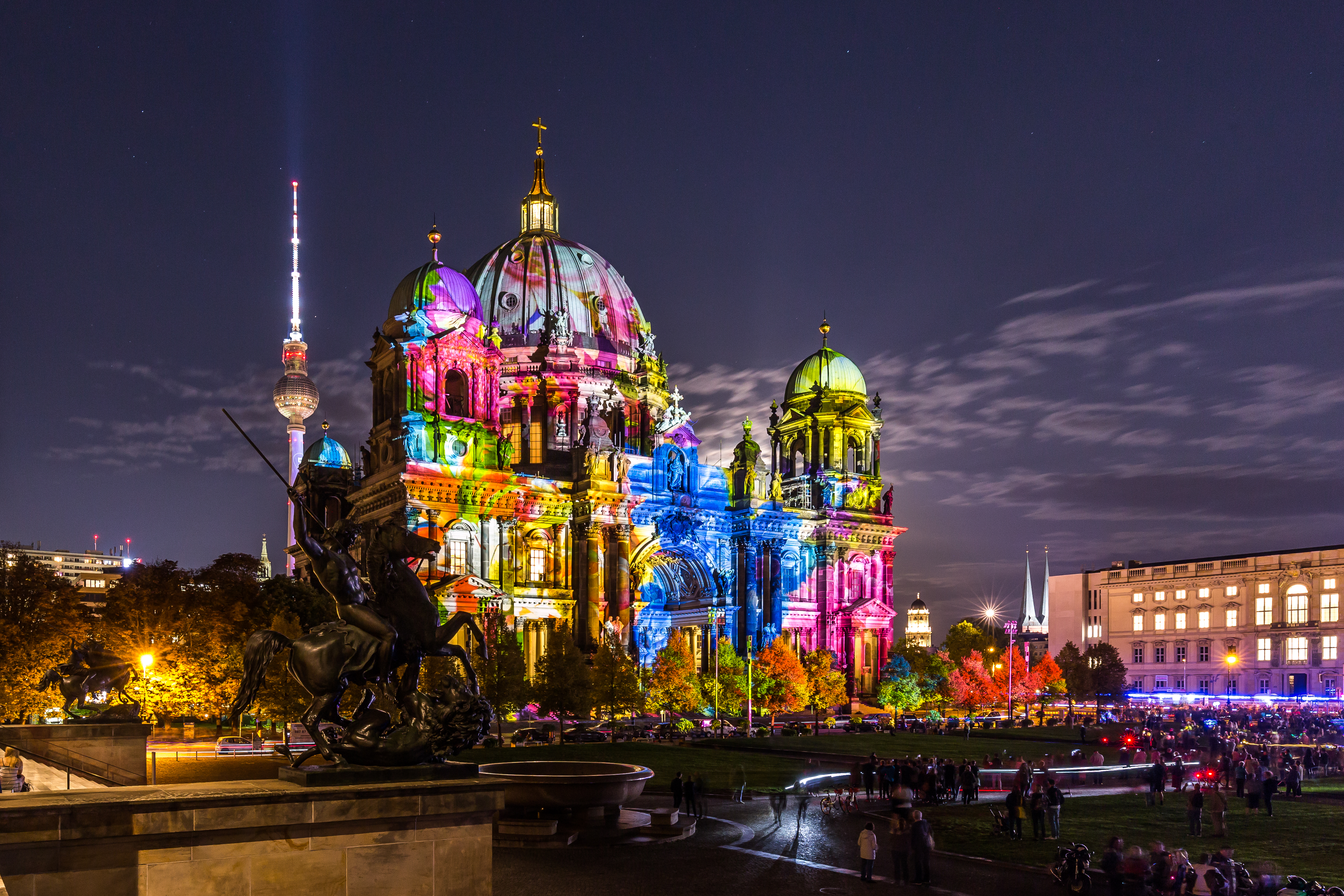
Interview with our festival photographer Frank Herrmann about the work for the Festival of Lights Berlin and the new program Excire
Frank Herrmann has been our festival photographer for 15 years and with his team is responsible for the most beautiful shots of our illuminated buildings and monuments, such as this beautiful shot from Potsdamer Platz of the Festival of Lights in 2019. We talk to him about his work during the festival and ask for his opinion on this year’s winner of the festival photo competition sponsored by EXCIRE.
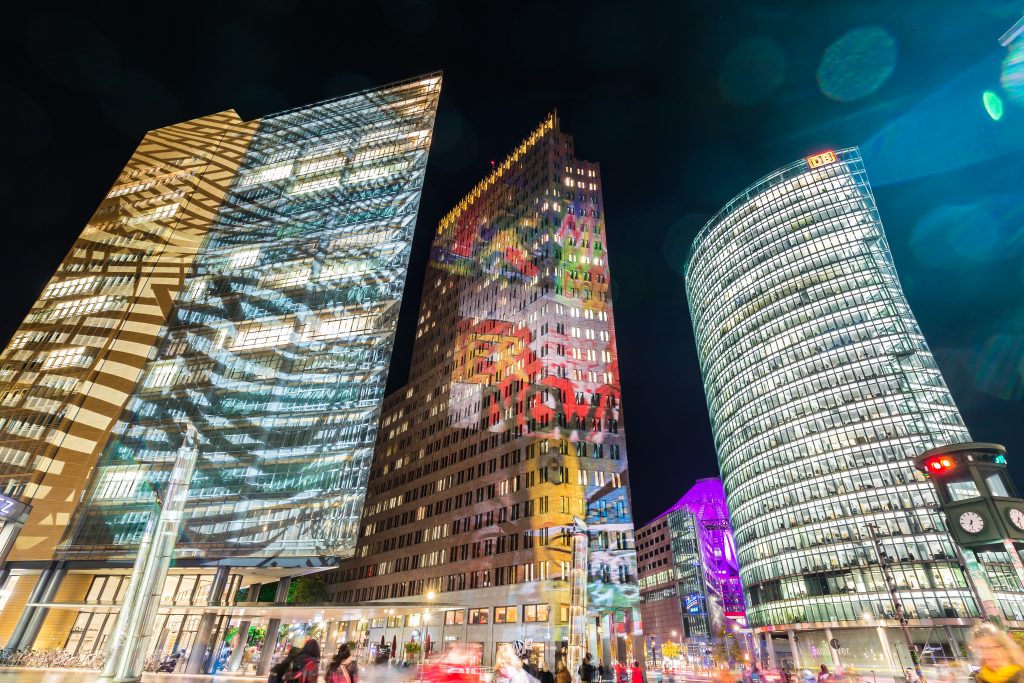
How does your work as a photographer at the Festival of Lights Berlin look like?
Frank Herrmann: The festival also begins for the photo team before the official ten days of the festival. Press conference, several nights trial lights at different objects across the city, briefing and rough planning to create everything in the 10 official days. During the festival, the festival usually takes place 24 hours a day. Often still at night, in any case in the morning after each festival evening, the pictures are finished edited and played over. During the day one then plans the following evening: What is particularly important today, who in the photo-team does what, for whom is what on which path the cheapest and with as little time loss as possible due to bypassing. What takes place only today, what needs to be worked out today, is the access to projection towers or other photo standpoints guaranteed or to whom one has to tell since, what did not work yesterday and must be done again. The mission of the festival photographers is to document all the illuminations and mappings of the Festival of Lights Berlin. If, for example, a mapping runs on the TV tower or the Brandenburg Gate, a photo should be taken of each individual motif of this light show. Thus, several thousand recordings are made regularly during the festival. . . This only works in and with a good team! With one exception, I was present at each of the 15 Festivals of Lights in Berlin so far, and the festival’s organising team supports the photographers wherever they go. In the ten days of Festival of Lights, everything MUST be done – even for us festival photographers, the lights will go out on the ten days at midnight. In the meantime, we are a well-functioning and reliable photo team, and complement each other seamlessly with the organising team and the festival boss Birgit Zander. Each of us is proud to be part of this great event in Berlin.
And now an Insider Tipp by a professional? How do you take the best Festival of Lights Berlin picture?
Frank Herrmann: There is no “best photo. ” Personally, I like creative photos, when festival visitors don’t take a photo of the illuminated object, which everyone has already taken anyway, just take it again. Just look around at the respective building and become creative. Changing the camera position, an interesting foreground and so on – everything is possible. Be creative! Of course, lucky hits also succeed or you are just in the right place at the right time. A winner of the Festival of Lights photo competition once reported how a “Autumn leaflet illuminated in front of the Festival of Lights Brandenburg Gate” was created: The photographer waited two hours on the motif for certain conditions and experimented with the motif. The picture has then also become great and unique and he has won rightly.
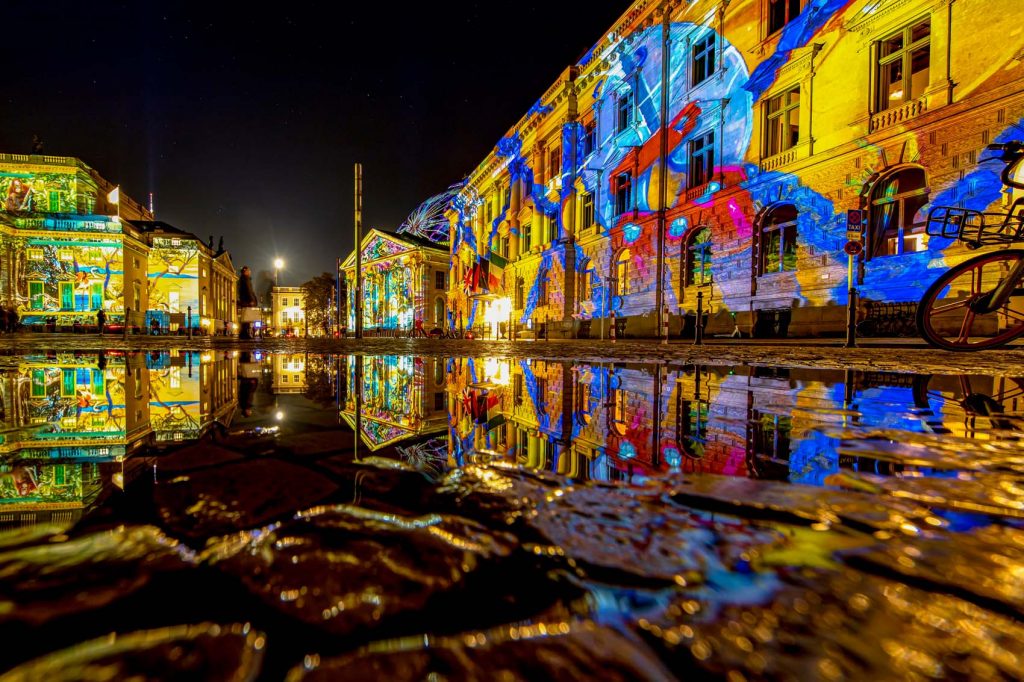
On the other hand, the question which we often ask in the photo workshops, which camera is best suited, does not matter at all. Of course, the basic operation and importance of the camera settings should be fairly common. A tripod is useful, image sharpness, image detail and colors should match. In essence, however, creativity is important. After all, great photos and even a winning photo of the Festival of Lights photo competition with a smartphone have already been taken. Are you interested in a photo workshop with our Festival of Lights Berlin photographer Frank Herrmann? All information about this can be found here: http://fhmedien.de/
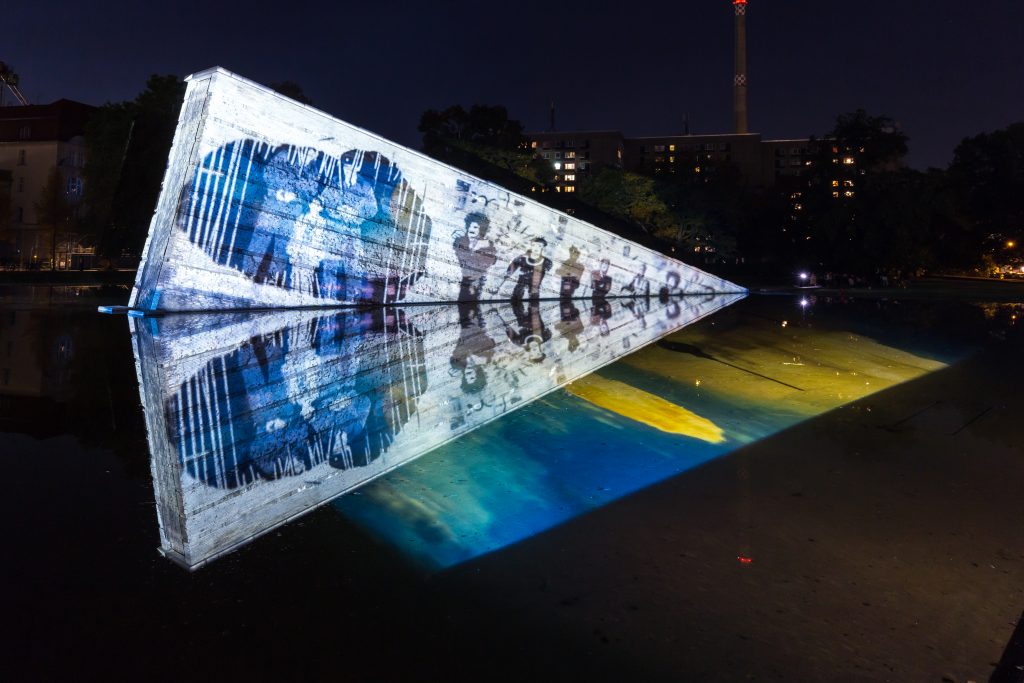
A big thank you to this year’s sponsor of the Festival of Lights photo competition. The Pattern Recognition Company GmbH develops EXCIRE photo and is distributed in Europe. PRG GmbH is a spin-off of the University of Lübeck and has been active in the field of artificial intelligence since 2005. Pattern Recognition Company GmbH has an excellent team of computer scientists and outstanding expert knowledge in the fields of machine learning and computer vision.
Among all participants, we are giving away the photo management software EXCIRE.
We have made the EXCIRE software available free of charge to our festival photographer Frank Herrmann to give an assessment of the software as a winning suitability for the 2020 photo competition.
Thank you for testing the EXCIRE software. Your assessment? How do you work with it?
Frank Herrmann: EXCIRE is a photo management software that offers many more functions than for example Lightroom or even the famous unsorted “Lose Folder Collection” on a user’s computer. Most people who are involved in photography usually know when or where they have taken this or that picture. However, with the years and increasing amounts of images in one’s own archives, it is increasingly difficult to find images in a targeted way. Timely and good tagging ensures that these images can easily be found in large archives or rather unsorted collections. But this tagging is a real time-eater, if you are practicing it half-seriously. And this is exactly where EXCIRE starts: EXCIRE analyzes the user’s images on the user’s hard drive on its own and with a kind of “artificial intelligence” and assigns independently keywords to each of the images. That’s what I wanted to try. Since I have organized my image archive completely differently so far and since I didn’t want to turn on any software for the first time, I created an extra image test folder for EXCIRE with 100 images arbitrarily and across my archive. I then loaded this test folder into EXCIRE. The installation process went super fast and very easy. The basic functions of image sorting such as managing directories, evaluating images internally or view sizes and some other preview options are quickly understood and adapted with just a few mouse clicks. EXCIRE immediately assigned the keywords for the 100 test images in the test folder without my help. The keywords given by EXCIRE corresponded to approx. 90%. In two pictures, EXCIRE didn’t recognize anything and didn’t assign any keywords. An example from my test folder: An image of the Berliner Fernsehturm at night with a Festival-of-Lights mapping was automatically tagged by EXCIRE with “City, Architecture, Tower, Buildings, City Lights. ” At any time, the user can change, add or delete keywords immediately or later – for this one image, several images, entire folders, the entire image archive. So at the latest, if someone is looking for a photo of the TV tower in his extensive image archive in five years, the keyword “Tower” will be very useful, and will quickly narrow down his search and lead to the desired image. If you tag your pictures in this case, for example with “Festival of Lights, 2019, Mapping”, the search for pictures after that is not a problem in a few years. A photo of a horse in the snow in the test folder was automatically tagged by EXCIRE with “horse, animal, mammal, herbivore” to give another example. Further search options of EXCIRE are for example “Search faces” or “Search people” – this also worked correctly in my test. Very interesting are also the functions of EXCIRE, to search your own pictures not only by self-assigned ratings, but for example also by used camera, focal length, exposure time, city or country (if correctly keyworded or geotagged from the camera). Also searching for certain colors that dominate an image works (“Orange” for example will turn off images with sunsets).
EXCIRE has a great variety of functions, but is still easy and intuitive to use.
Interesting and important nowadays is the fact that EXCIRE does not use cloud or data transfer to any other server or service provider for its functions – everything happens locally on the user’s computer, no image, no information is transmitted anywhere.
Your final statement?
I can only recommend EXCIRE to any ambitious photographer. So completely it does not replace the manual encryption yet, but takes one about. 90% of the work in seconds, both when tagging and when searching for pictures at some point.
Please find further information about EXCIRE here: https://www.excire.com/de/
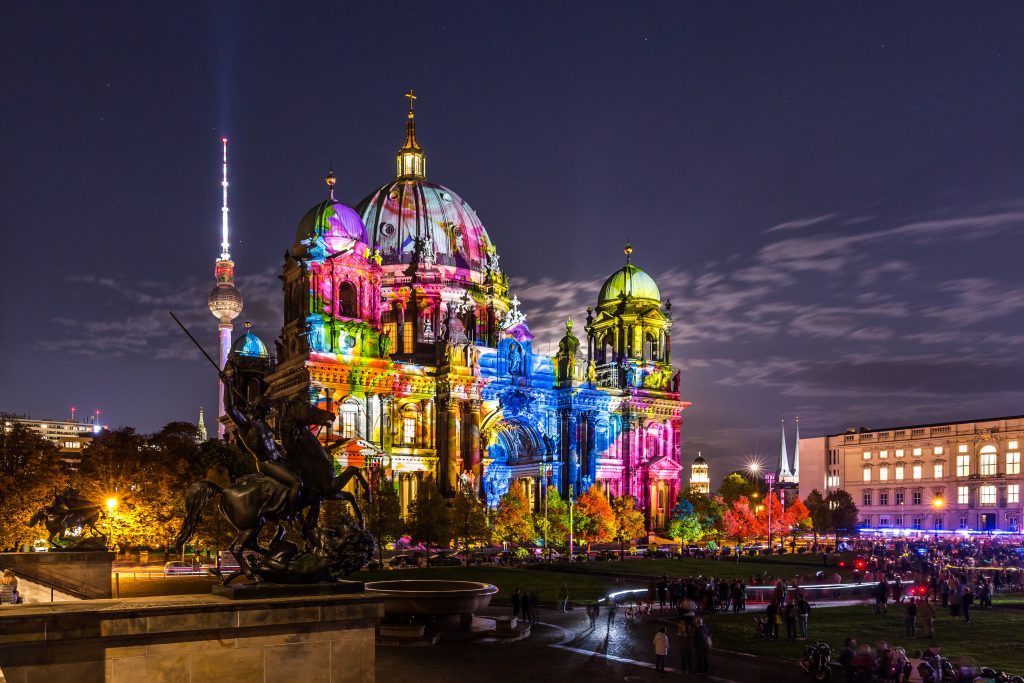
You want to take part in this year’s Festival of Lights special Edition photo competition and win the EXCIRE photo software worth 79 €?
Send us your special Festival of Lights special Edition photo! Be creative! Whether with a smartphone or camera. Let yourself be inspired as you stroll through the city and send us your winning image!
More information about the photo competition and how to participate can be found here: https://festival-of-lights.de/de/fotowettbewerb/
